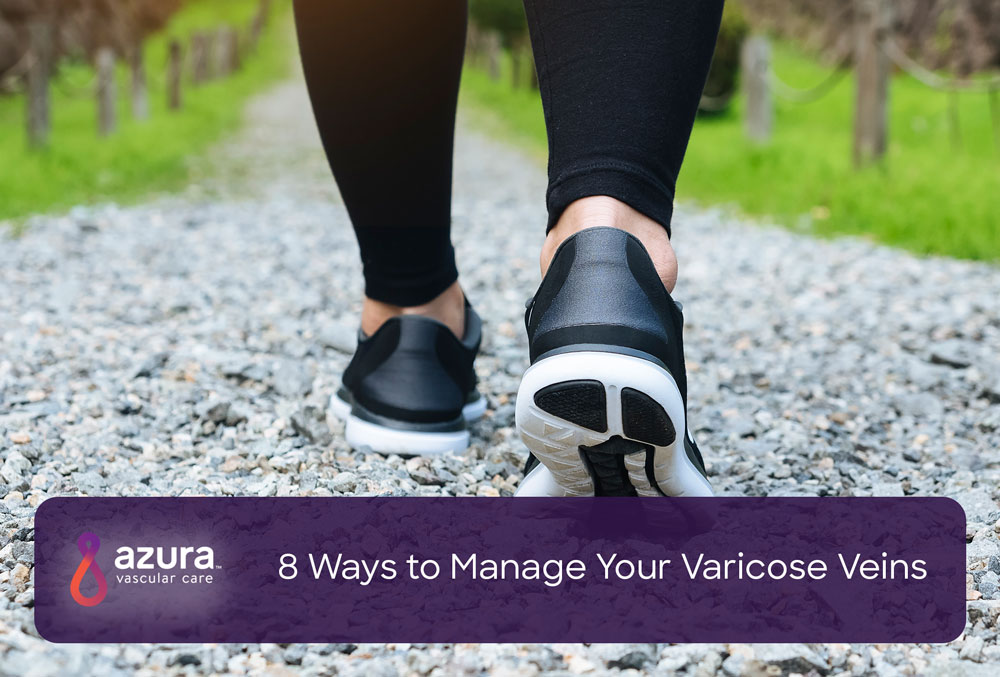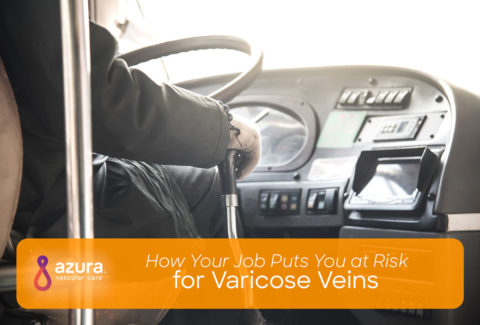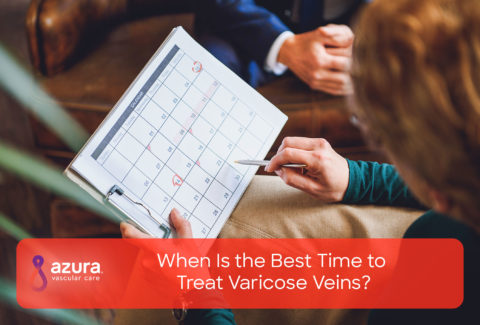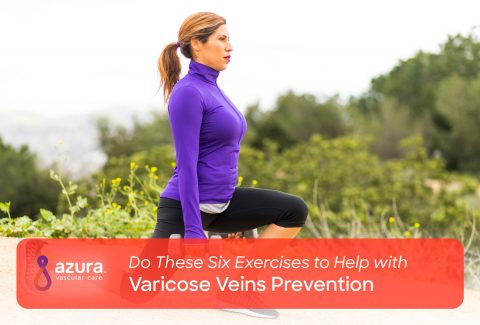
Without varicose veins management or treatment, the condition may lead to chronic pain, but there are many treatment options and lifestyle choices that can help you control your symptoms. You can even exercise with varicose veins—provided you check with your doctor—to enhance blood flow.
8 Ways You Can Manage Varicose Veins
- Compression stockings
- Proper shoes
- Avoid prolonged sitting or standing
- Exercise
- Stop smoking
- Elevate feet
- Losing weight and healthy eating
- varicose veins treatment
1. Compression Stockings
Veins have valves that keep your blood flowing in one direction. When these valves don’t work properly, blood can pool, which may lead to varicose veins in the legs. Compression stockings are tight-fitting socks that put mild pressure on your legs. This helps support damaged valves and encourages proper blood flow. Compression stockings may also help prevent blood clots.
2. Proper Shoes
There are genetic risk factors that predispose you to varicose veins—and age plays a role—but certain lifestyle choices also substantially increase your odds of developing this potentially painful vein issue. Studies have found that wearing high-heeled shoes may increase your risk of developing varicose veins. If you already suffer from varicose veins, high heels can worsen these veins. Try a shoe with good arch support, a nursing shoe, or a stylish flat. (1)
3. Avoid Prolonged Sitting or Standing
If you have a job that requires you to stand several hours per day—as nurses, teachers, and retail salespeople do—it is important to move, to rest, and to exercise. When you stand for prolonged periods, you are putting undue stress on your leg veins. When you sit for extended periods—as truck drivers and office workers do—you are compromising blood flow.
4. Exercise
Exercising with varicose veins may be painful, but there are certain activities that can help improve blood flow through the leg veins. These include walking, biking, and swimming. Ideally, you want to move your calves and get the blood flowing through your legs. It’s important to warm up before exercising with varicose veins, and it’s generally important to avoid exercising after certain vein treatments. If you have varicose veins, always consult your doctor before beginning an exercise routine.
RELATED: 13 Exercise & Varicose Veins Do’s and Don’ts
5. Stop Smoking
Smoking affects many organs in the body and can damage blood vessels as well. Smoking restricts circulation and narrows blood vessels which can lead to poor circulation and the development of varicose veins.
6. Elevate Feet
As part of varicose veins management, you can elevate your feet to help blood flow more freely into and back from your legs, which improves circulation. Elevating your feet can help with pain and leg swelling. Reducing swelling may also help stave off the painful ulcers associated with vein disease. (3)
7. Losing Weight and Healthy Eating
Carrying extra pounds puts pressure on your veins which may worsen the blood pooling caused by poorly functioning vein valves. When you lose weight, you are also lessening the pressure that is put on your leg veins. Losing weight cannot reverse the presence of varicose veins but may prevent any existing varicose veins from worsening in appearance. Eating a balanced diet is an important factor in maintaining a healthy weight. It’s also important to watch your salt intake, which can lead to water retention, general heaviness, and added pressure on your legs.
8. Varicose Veins Treatment
There are varicose veins treatments available for those who want to rid themselves of varicose veins under the care of a vascular specialist. Varicose veins can return after treatment so it’s important to make healthy lifestyle changes to support medical interventions. Generally, the more proactive you are with your health, the better the outcome.
Sclerotherapy is one treatment option for varicose veins. During this procedure, a vascular specialist will make injections into the varicose veins to help reroute blood flow to veins that are healthier. Alternatively, endovenous thermal ablation relies on high-frequency radio waves or laser heat to reroute blood to healthier veins and shut down problematic veins.
Occasionally, surgery for varicose veins is warranted, but when you are taking proactive steps—making healthy choices with your diet, quitting smoking, elevating your feet, and exercising—you stand a much better chance of avoiding surgery. You can also lower your risk of potentially dangerous complications like venous ulcers and blood clots.
If you have questions about varicose veins management, call 866-996-9729 and schedule an appointment with a vascular specialist.
Sources:
(1) Devi, A.S., & Aathi, M. (2014). Prevention of varicose veins. International Journal of Advances in Nursing Management 2(1): January-March. https://www.researchgate.net/publication/294764354_Prevention_of_Varicose_Veins.
(2) Society for Vascular Surgery. (2015, January 18). Facing surgery? Quit smoking now for a safer procedure. https://vascular.org/news-advocacy/facing-surgery-quit-smoking-now-safer-procedure.
(3) John Hopkins Medicine. Varicose veins. Retrieved September 30, 2018, from https://www.hopkinsmedicine.org/healthlibrary/conditions/cardiovascular_diseases/varicose_veins_85,p08259



